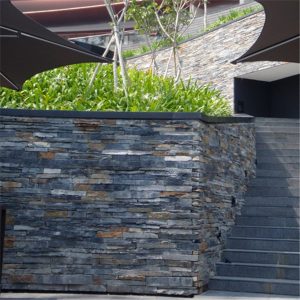Introduction
Cultured stone, also known as manufactured stone or faux stone, has gained popularity in the construction and design industry for its beauty, durability, and versatility. With advancements in technology, cultured stone patterns have become more realistic and customizable, offering a wide range of options for homeowners, architects, and designers. In this article, we will explore the world of cultured stone patterns, including their history, manufacturing process, design options, and advantages.
History of Cultured Stone Patterns
Cultured stone has a long history that dates back to ancient civilizations where natural stone was used in building structures. The idea of creating manufactured stone to mimic the look of natural stone emerged in the 20th century as a more cost-effective and lightweight alternative. The first cultured stone products were made using cement, aggregates, and iron oxide pigments to create a stone-like appearance.
Over the years, advancements in manufacturing techniques and materials have improved the quality and realism of cultured stone patterns. Today, cultured stone is made from a lightweight composite material that is cast in molds to replicate the texture and appearance of natural stone. With the use of modern technology, manufacturers are able to create a wide range of patterns and colors that closely resemble natural stone.
Manufacturing Process of Cultured Stone Patterns
The manufacturing process of cultured stone patterns involves several steps to create a high-quality and realistic product. The first step is to create molds of natural stone patterns, such as limestone, granite, or slate. These molds are made from silicone or other materials that can capture the intricate details and texture of the natural stone.
Next, the composite material is mixed with pigments to achieve the desired color and texture. The mixture is poured into the molds and allowed to cure and harden. Once the material has set, the molds are removed, revealing the finished cultured stone pieces. These pieces are then trimmed, shaped, and finished to achieve the desired look and size.
Design Options of Cultured Stone Patterns
One of the key advantages of cultured stone patterns is the wide range of design options available to homeowners and designers. Cultured stone can be customized to match the style and aesthetic of any project, whether it be a rustic farmhouse, a modern urban loft, or a traditional colonial home. Some popular design options for cultured stone patterns include:
1. Limestone: Limestone cultured stone patterns are popular for their soft, natural look and subtle color variations. They are often used in traditional and Mediterranean-style homes for a classic and timeless appearance.
2. Granite: Granite cultured stone patterns feature bold colors and intricate veining that mimic the look of natural granite. These patterns are ideal for modern and contemporary designs that require a touch of elegance and sophistication.
3. Slate: Slate cultured stone patterns are known for their rugged texture and earthy tones. They are commonly used in rustic and cabin-style homes to create a warm and inviting atmosphere.
4. https://www.fs-slate.com/mosaic/ : Brick cultured stone patterns offer a traditional and timeless look that is perfect for colonial and farmhouse-style homes. They can be used to create accent walls, fireplace surrounds, and exterior facades.
5. River Rock: River rock cultured stone patterns mimic the smooth, rounded shapes of natural river rocks. They are popular for creating a natural and organic feel in outdoor spaces such as patios, walkways, and water features.
Advantages of Cultured Stone Patterns
There are several advantages to using cultured stone patterns in construction and design projects. Some of the key benefits include:
1. Cost-Effective: Cultured stone is generally more affordable than natural stone, making it a cost-effective alternative for homeowners and builders working within a budget.
2. Lightweight: Cultured stone is lightweight and easy to install, reducing labor costs and the need for heavy equipment during construction.

3. Versatility: Cultured stone patterns come in a wide range of colors, textures, and shapes, allowing for endless design possibilities. They can be used for interior and exterior applications, such as accent walls, fireplace surrounds, and facades.
4. Durability: Cultured stone is durable and long-lasting, able to withstand the elements and maintain its appearance over time. It is resistant to fading, chipping, and cracking, making it an ideal choice for outdoor use.
5. Eco-Friendly: Cultured stone is made from recycled materials and requires less energy to manufacture compared to natural stone, making it a more sustainable choice for environmentally conscious consumers.
Conclusion
Cultured stone patterns offer a beautiful and versatile alternative to natural stone for construction and design projects. With a wide range of design options, realistic textures, and cost-effective benefits, cultured stone has become a popular choice for homeowners, architects, and designers alike. Whether you are looking to create a rustic fireplace surround, a modern accent wall, or a traditional exterior facade, there is a cultured stone pattern to suit your style and budget. Explore the world of cultured stone patterns and discover the endless possibilities for enhancing the beauty and functionality of your space.
